Apple Announces new 8th gen iPad with A12, iPad Air with 5nm A14 Chip
by Andrei Frumusanu on September 15, 2020 4:00 PM EST
This year’s September Apple event has been relatively unusual, not only because of the pandemic and online-only nature of the show, but also because amongst the new hardware releases there’s been an evident lack of a new iPhone at this point in time.
Apple however didn’t disappoint, and managed to showcase brand-new iPads and Apple Watches. Amongst the new tablet line-up, we find the new 8th generation iPad which sees an upgrade in its computing capabilities with the new A12 chip, and the newest iPad Air which sees a total redesign, adopting the design queues of the iPad Pro siblings, and also for the first time introducing the new Apple A14 chipset – the industry’s first 5nm processor.
| Apple iPad Comparison | ||||||
| iPad (2019) |
iPad (2020) NEW |
iPad Air (2019) |
iPad Air (2020) NEW |
|||
| SoC | Apple A10 2x Hurricane 4x Zephyr |
Apple A12 2 × Vortex @ 2.5GHz 4 × Tempest @ 1.59GHz |
Apple A14 2 × Firestorm 4 × Icestorm |
|||
| Display | 10.2" 2160x1620 IPS LCD |
10.5" 2224x1668 IPS LCD DCI-P3, True Tone |
10.9" 2360x1640 "Liquid Retina" IPS LCD DCI-P3, True Tone |
|||
| Dimensions | 250 x 174.1 x 7.5mm 483g |
250 x 174.1 x 7.5mm 490g / 495g |
250.6 x 174.1 x 6.1mm 456g / 464g |
247.6 x 178.5 x 6.1mm 458g / 460g |
||
| RAM | 3GB LPDDR4 | ? | 3GB LPDDR4X | ? | ||
| NAND | 32 / 128GB | 64 / 256GB | 64 / 256GB | |||
| Battery | 32.9Wh | ? | 30.8Wh | |||
| Front Camera | 1.2MP, F/2.2 | 7MP, F/2.2 | ||||
| Rear Camera | 8MP, F/2.4, 1.12 µm | 8MP, F/2.4 | 12MP, f/1.8 | |||
| Cellular | 2G / 3G / 4G LTE (Category 9) | UE Category 16 LTE (1Gbps) with 4x4 MIMO and LAA | ||||
| SIM Size | NanoSIM | NanoSIM + eSIM | ||||
| Wireless | 802.11a/b/g/n/ac 2x2 MIMO, BT 4.2 LE, GPS/GLONASS |
802.11a/b/g/n/ac 2x2 MIMO, BT 5.0 LE, GPS/GLONASS |
802.11a/b/g/n/ac/ax 2x2 MIMO, BT 5.0 LE, GPS/GLONASS |
|||
| Connectivity | Apple Lightning 3.5mm headphone jack |
Apple Lightning | USB-C | |||
| Launch OS | iOS 13.1 | iOS 14 | iOS 13.1 | iOS 14 | ||
| Launch Price | (Wi-Fi / Cellular) $329/$459 (32G) $429/$559 (128G) |
(Wi-Fi / Cellular) $329/$459 (32G) $429/$559 (128G) |
(Wifi / Cellular) $499/$629 (64G) $649/$779 (256G) |
(Wifi / Cellular) $599/$729 (64G) $749/$879 (256G) |
||
Starting off with the most exciting tablet today, which is the new iPad Air:
At the heart of the new tablet we find Apple’s newest A14 chip, which is a keystone component of the new generation devices and will also likely power the next generation iPhone once it gets released later this year. Apple’s event disclosures this year were a bit confusing as the company was comparing the new A14 metrics against the A12, given that’s what the previous generation iPad Air had been using until now – we’ll need to add some proper context behind the figures to extrapolate what this means.
On the CPU side of things, Apple is using new generation large performance cores as well as new small power efficient cores, but remains in a 2+4 configuration. Apple here claims a 40% performance boost on the part of the CPUs, although the company doesn’t specify exactly what this metric refers to – is it single-threaded performance? Is it multi-threaded performance? Is it for the large or the small cores?
What we do know though is that it’s in reference to the A12 chipset, and the A13 already had claimed a 20% boost over that generation. Simple arithmetic thus dictates that the A14 would be roughly 16% faster than the A13 if Apple’s performance metric measurements are consistent between generations.
On the GPU side, we also see a similar calculation as Apple claims a 30% performance boost compared to the A12 generation thanks to the new 4-core GPU in the A14. Normalising this against the A13 this would mean only an 8.3% performance boost which is actually quite meagre.
In other areas, Apple is boasting more significant performance jumps such as the new 16-core neural engine which now sports up to 11TOPs inferencing throughput, which is over double the 5TOPs of the A12 and 83% more than the estimated 6TOPs of the A13 neural engine.
Apple does advertise a new image signal processor amongst new features of the SoC, but otherwise the performance metrics (aside from the neural engine) seem rather conservative given the fact that the new chip is boasting 11.8 billion transistors, a 38% generational increase over the A13’s 8.5bn figures.
The one explanation and theory I have is that Apple might have finally pulled back on their excessive peak power draw at the maximum performance states of the CPUs and GPUs, and thus peak performance wouldn’t have seen such a large jump this generation, but favour more sustainable thermal figures. What speaks against such a theory is that Apple made no mention at all of power or power efficiency this generation, which is rather very unusual given they’ve always made a remark in regards to this aspect of the new designs. We’ll have to see if this is indicative of the actual products, of it’s just a side-effect of the new more streamlined presentation style of the event.
Whatever the performance and efficiency figures are, what Apple can boast about is having the industry’s first ever 5nm silicon design. The new TSMC-fabricated A14 thus represents the cutting-edge of semiconductor technology today, and Apple made sure to mention this during the presentation.
Coming back to the iPad Air, the new tablet is a complete redesign for the mid-range device, and now adopts the new design language that had been introduced with the latest iPad Pro models over the last generations. This means a new thinner bezel design and the loss of the home button.
Centre-stage we find a new 10.9” liquid retina IPS LCD panel with a 2360 x 1640 resolution. The panel comes with all bells and whistles you expect from Apple, such as a full lamination manufacturing process to enable better contrast and a “pop-out” feeling, True Tone and a Display P3 colour gamut.
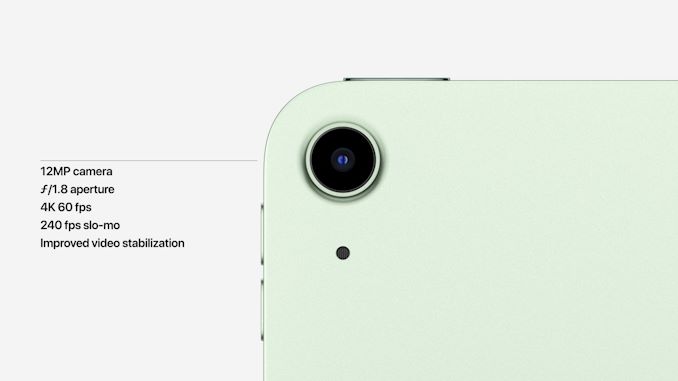 We’re seeing the adoption of the same 12MP 1.22µm pixel sensor as on the recent generation iPad Pro models, sporting a for a tablet relatively large f/1.8 aperture.
We’re seeing the adoption of the same 12MP 1.22µm pixel sensor as on the recent generation iPad Pro models, sporting a for a tablet relatively large f/1.8 aperture.
Interestingly, because of the removal of the TouchID home button on the tablet, Apple has opted to not just solely rely on Face ID, but to introduce a new fingerprint scanner on the frame of the device. The new capacitive design isn’t exceptionally novel in the industry, however it’s the first time that we see Apple employ such a unit in their products.
Another big noteworthy change in the new iPad Air is the fact that it’s now using a USB-C connector rather than Lightning. Apple here explains that the new connector allows for much faster transfer speeds between more devices. It’s a much welcome addition to the new generation, and we’re still crossing our fingers that Apple will make the same choice on the next-gen iPhone.
8th Generation iPad: A12 Brains Upgrade
Also announced today was Apple’s new 8th generation iPad. The lower-entry tablet here largely retains the specifications of its predecessor when it comes to form-factor, display, cameras and connectivity.
The big improvement for this generation is the move from the A10 chip to the newer A12 generation. Although it’s not the newest silicon, at this price range the upgrade represents a massive performance boost, and now it means that even the lowest-end iPad supports high-performance machine learning through the inclusion of the Neural Engine.
$599+ for the iPad Air, $329 for the iPad
The new iPad Air will commence at $599 which is an uptick in terms of price range compared to its predecessor. The upgrade from 64GB to 256GB storage costs an extra $130, whilst cellular LTE connectivity over the basic Wi-Fi models costs an extra $150 as well. Oddly enough, availability of the iPad Air will only start in October, which is unusual for an Apple launch.
The 8th generation iPad starts at the same prices as the 7th gen, meaning $329 for the basic 32GB Wi-Fi model, with an extra $130 for the 128GB variant, and an extra $100 for cellular connectivity. Availability for the new iPad starts this Friday the 18th.
Related Reading:
- The Next Phase: Apple Lays Out Plans To Transition Macs from x86 to Apple SoCs
- Apple Announces iOS 14 and iPadOS 14: An Overview
- Apple Unveils New iPad Pro: A12Z Bionic, Camera w/ Depth Sensor for AR, Keyboard w/ Trackpad
- Apple Announces 10.2-Inch, A10-Powered 7th Gen iPad: Launching Sept. 30th for $329
- Apple Announces New 10.5" iPad Air, 7.9" iPad mini
- The iPhone SE (2020) Review: A Reinvigorated Classic
- The Apple iPhone 11, 11 Pro & 11 Pro Max Review: Performance, Battery, & Camera Elevated


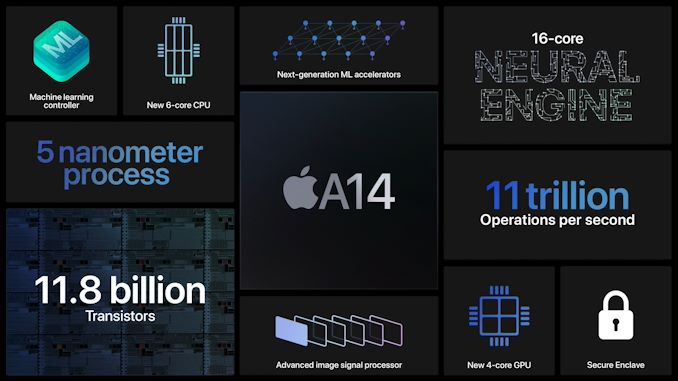
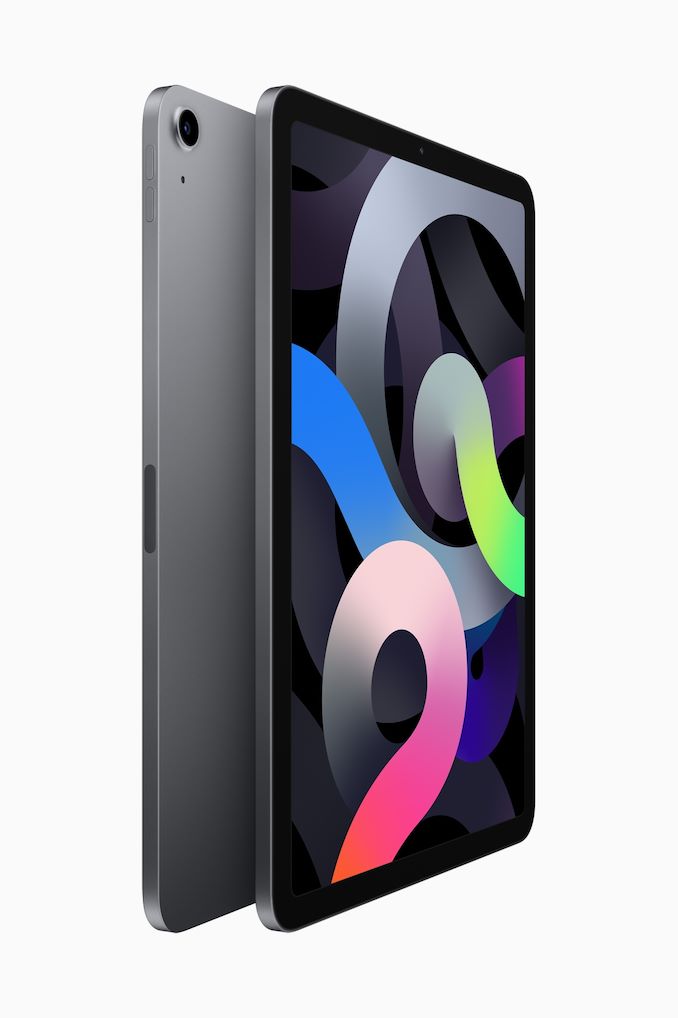
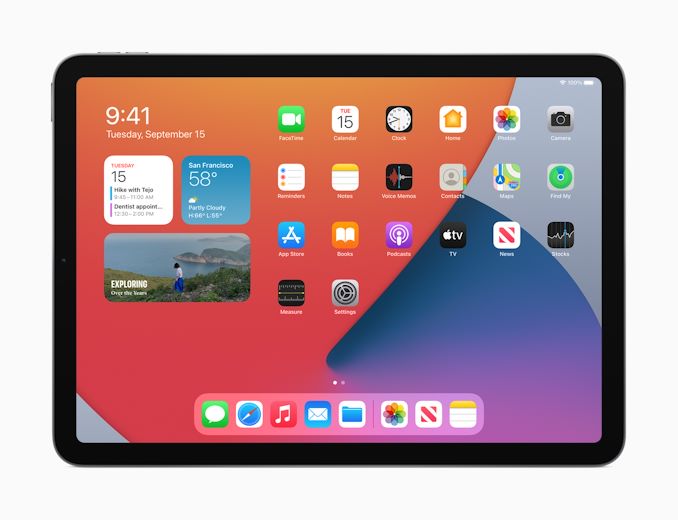

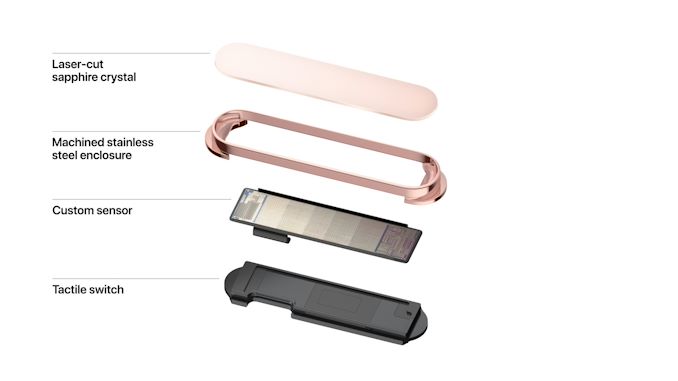
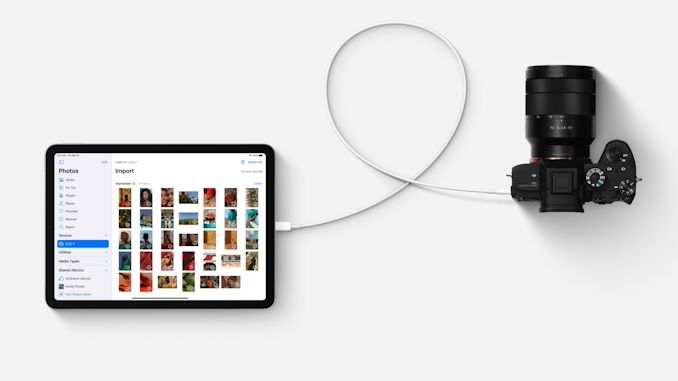
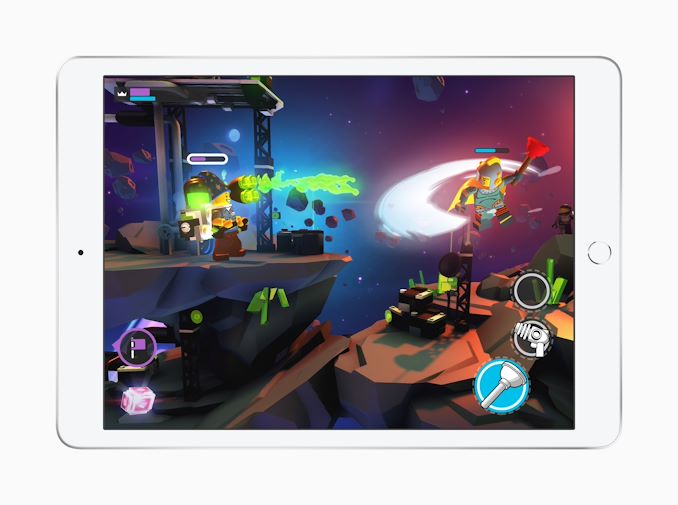








68 Comments
View All Comments
tipoo - Tuesday, September 15, 2020 - link
Since their comparisons were to the A12 in the previous iPad Air, if you work it backwards it doesn't look like as large a jump as usual from the A13. Looking at around 16% faster CPU and 8-9% faster GPU? I wonder if this is why they debuted in an iPad Air first, since its much more impressive in comparison to the last Air than the last iPhone, where they can kind of say they already talked about it at the iPhone event.Couldn't expect those huge single core gains forever, but from the iPhone 11 to 12 this looks like a smaller jump. If the iPhone 12 Pro had ProMotion that would have been an easy consideration if the added efficiency offset the higher refresh rate, but it doesn't sound like we're getting that this year.
dudedud - Tuesday, September 15, 2020 - link
Unless they haven't changed their architecture as was rumored, that 16% faster would be solely for the, again rumored, boost clock to 3Ghz.And two years without any meaningful improvement in their arch would be really really odd.
tipoo - Tuesday, September 15, 2020 - link
And with all the expanded caches at that.Most odd. I wonder if they're sandbagging their own numbers for reasons and purposes (AS Macs?)
Spunjji - Wednesday, September 16, 2020 - link
I'm fairly convinced by Andrei's supposition that they've gone for improved efficiency by constraining peak performance in the mobile devices - that would also be compatible with them "unlocking" the higher performance states for the MacBook devices they're launching later.Krysto - Wednesday, September 23, 2020 - link
I think they're using all of their main architects for the Arm v9-based A15. So A14 is just a rehashed and slightly improved (mostly from switching to new 5nm process) A12. Why A12 and not A13? Because A13 was not a very well balanced CPU microarchitecture - too power hungry.vvid - Thursday, September 24, 2020 - link
>>I think they're using all of their main architects for the Arm v9-based A15A15? It is on final stages and will be sampled soon (if not already)
In 6 months they will start mass production of these things.
Architects are working on A17.
shabby - Tuesday, September 15, 2020 - link
That's an expensive fingerprint button, $100 for it? Geez...Alistair - Tuesday, September 15, 2020 - link
yeah, i'm not impresseddeil - Wednesday, September 16, 2020 - link
Well, also bleeding edge 5nm cpu, which is its only strong point.seems meh overall,
but that cpu alone is "up to 15% higher performance with the same power consumption as the previous generation, or 30% lower power consumption with maintained performance."
so adding that to their gen-to-gen upgrades as something happened for sure, well maybe....
but yeah I laughed at the presentation
6x faster than Chromebook. YEAH, but I can get like 11 Chromebooks those guys mentioned for same price.
close - Wednesday, September 16, 2020 - link
While completely correct on the pricing, it doesn't tell a meaningful story. Sometimes 11 Chromebooks will have you finishing your tasks just as slowly as 1. Of course the newest iPad may not be the best choice if all you need is to watch Youtube or browse the web close to a power outlet. Right tool for the job, match your purchase to your performance needs (+some overhead). 9 women giving birth to a child in a month and all that...